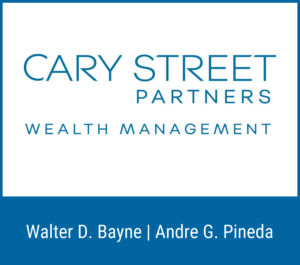A newly approved study could bridge the gap for a new river crossing across the Rappahannock.
The Fredericksburg Area Metropolitan Planning Organization’s Policy Committee (FAMPO) on Monday approved the Rappahannock Crossing study, which examines options for a new bridge leading from Stafford to Fredericksburg. The committee held a special meeting to vote after holding off on a decision when it was presented at its regular meeting on Nov. 17.
Two reasons were cited for this pause: the public comment window needed to remain open for two more days after the initial meeting; another consideration was to spare new committee members from having to play catch-up on the matter once they were sworn in.
Three members of the policy committee are leaving at the end of the year: Stafford County supervisor Meg Bohmke, Fredericksburg City councilor Jon Gerlach and non-voting member Jamie Jackson. It was Bohmke who suggested holding a meeting before the end of the year.
According to FAMPO Administrator and Director of Transportation Planning Ian Ollis, the next step for the project is to commence with an assessment from the National Environmental Policy Act (NEPA).
The NEPA study will look to determine an exact location for the corridor. It would be located west of Interstate 95 and run from the end of Celebrate Virginia Parkway in Stafford County, crossing the Rappahannock River and joining with Gordon Shelton Boulevard in Fredericksburg.
This particular corridor, known as “Option C” in the study, was endorsed as the locally preferred corridor by the policy committee through a resolution made on June 16.
The assessment will also look at whether there would be any negative environmental impact due to the crossing. Ollis said that if there is any possibility of a negative impact found through the NEPA study, then the organization will recommend mitigation measures, which FAMPO will have to take into account.
The proposed bridge will have multi-modal options and a shared-use path included in the design specifications. Also incorporated into the design is a viewing platform for people to survey the river and other natural features.
Both FAMPO and the George Washington Regional Commission will have to submit applications to fund both the NEPA assessment and the engineering design of the crossing. Ollis said that the organizations plan to apply for a federal build grant in January or for a SMART SCALE grant from the Virginia Department of Transportation.
A decision has not yet been made on which funding option to pursue for the project, Ollis said. He added that, while the project is moving ahead, there will still be opportunities for the public to be heard as it progresses. For example, VDOT will hold a public hearing once the NEPA study is completed.
“It’s not the end of the road for people who want to give additional comments, they will have another opportunity to do that again,” he said.
At both meetings, members of the public were able to comment on the matter of the river crossing. While many were for the construction of the crossing, others were against it for fear that it would cause more traffic issues. Some speakers were concerned about environmental impacts of the bridge and suggested moving it further up or down the river in order to preserve nature.
Stafford resident Alan Watkins spoke at the special meeting and expressed his concerns about the preservation of environmental and historical sites around the proposed area. Watkins cited rock placements where Native Americans used to fish and suggested a bump-out where people could park and learn about the rock outcroppings.
“We have an opportunity to involve the public in experiencing them depending on where you might put the roadway,” he said.
Among those who were against the crossing was Peter Walton, who expressed his views in a letter to the committee. Walton believed that there was sufficient access from Stafford into Fredericksburg and that the river crossing would create more congestion.
“I do not see a need for an additional crossing of the Rappahannock River at any of the sites mentioned in the report,” Walton wrote. “The proposed crossing sites place additional traffic into the Central Park shopping area which adds to the congestion the area already experiences on a continuous basis.”
Stafford resident Joe Brito approved of the study and attached a petition signed by over 5,300 in favor of the crossing. Brito said that the area lacked alternate routes between Stafford and Fredericksburg apart from the I-95 south route and the Falmouth bridge, making this crossing necessary.
“Shorter trips and time savings will get cars off the road quicker and make air conditions significant,” he wrote. “Maximizing the use of $100 million of under-utilized infrastructure could get us out of gridlock.”



















